How to choose a two-burner electric hob?

Recently, many have opted for compact hobs, replacing outdated and bulky kitchen appliances with them. We will give advice on how to choose a two-burner electric hob.
Peculiarities
Standard 2-burner electric hobs are half the size of a standard hob, making them the perfect solution for small kitchens. In addition, it is possible to combine several hobs with each other in a way convenient for you. And the installation of such equipment itself is possible literally in any corner of the kitchen.
It is possible to use electric hobs in addition to the main hob. This will create a versatile cooking surface. If you plan to fully renovate the kitchen, then first it is better to buy a panel, and then order a set with already provided niches for it. It is convenient to take portable hobs with you on the road or install in temporary places of residence (for example, in a dormitory).

Advantages and disadvantages
Let's start with the good.
- Low price. Compared to standard hobs, electric hobs are more cost effective. If you do not like to cook and do not plan to devote a lot of time to it, then there is no point in overpaying.
- Suitable for use in houses with old wiring. Low load on the network will allow you to forget about knocking out traffic jams.
- Electric hobs are very compact and will be an excellent solution for communal apartments.
- Powered by electricity. Gas is not supplied to the room. Therefore, risks to life and health are excluded.
- A wide range of models and the ability to combine units with each other.
- The smooth surface makes the appliance easy to clean.
- The two-burner electric hob takes up little space.
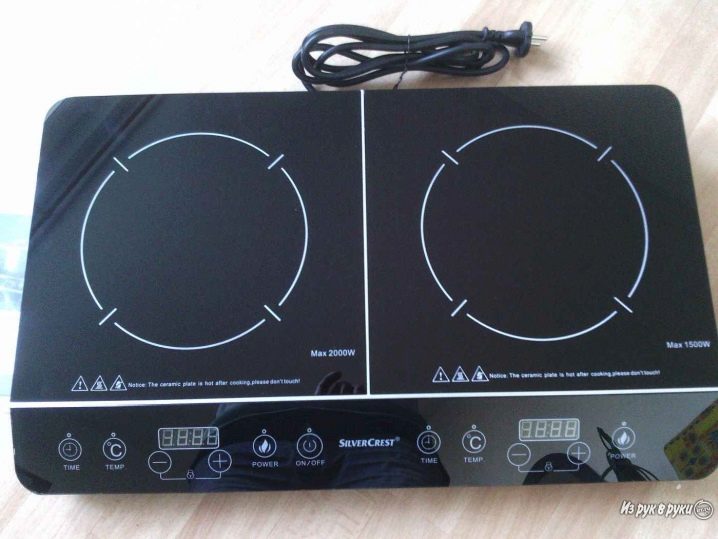
When everything is so good, there is always a “but”.
- First of all, restrictions in the preparation of culinary delights. Of course, even on the most basic stove, you can cook simple dishes like mashed potatoes, soup or pilaf, but cooking more complex dishes will add hassle.
- Energy consumption increases and, as a result, bills rise.
- There is very limited functionality on economy class models.
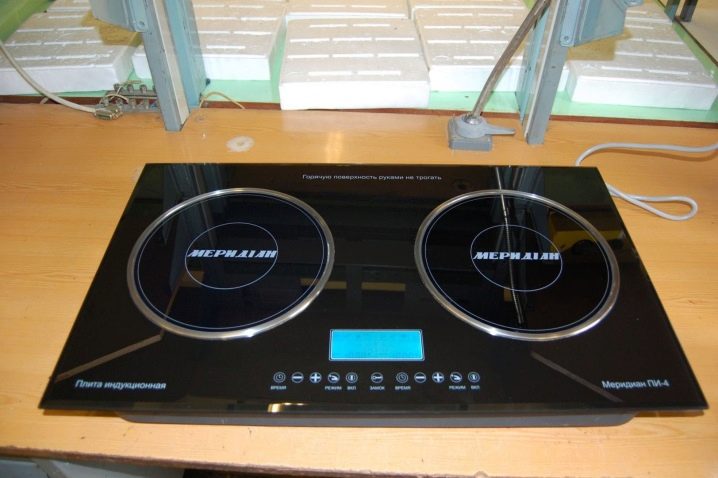
These features are common to electric hobs. But each manufacturer seeks to solve the arising difficulties with the operation of their products.
Manufacturers create whole lines that meet different customer needs and have their own characteristics.
Varieties
Consider the various technical characteristics of electrical panels. Panel power: 2000-2500 W. Power supply voltage: 220-240 W. The overwhelming majority of the presented models are made using stainless steel, on which pancakes are "planted", and glass ceramics. According to the type of burners, pancakes (halogen), Hi Light and induction are distinguished. Their fundamental difference is in the heating method.
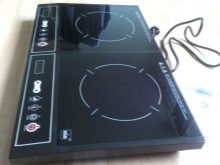


The pancake hob is heated to a high temperature using the built-in spiral. The pancake material is cast iron. You can burn yourself on such a burner. Outwardly, it looks either as a round surface, raised above the main panel, or located at the level of the main panel and highlighted with a red circle.

Induction hotplates work on the principle of heating the dishes themselves with magnetic fluxes emanating from the hotplate.Throughout the entire operating time, they remain cold or heat up slightly. But you will have to buy special cookware for induction hobs.
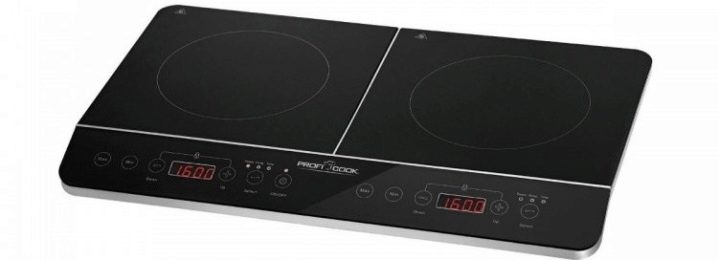
Hi Light is a new development based on corrugated belts. But such models have a significant disadvantage: you need to make sure that the diameter of the dishes does not exceed the diameter of the selected area. There are also glass-ceramic hobs that work on the principle of an incandescent spiral.

Less commonly, gas-heated glass-ceramic stoves are made. Protect such a panel from pinpoint impacts and do not sprinkle sugar on it. Enamelled models. They are based on stainless steel, which is then covered with enamel. The hob burners have different power levels and can be easily distinguished by their diameters.
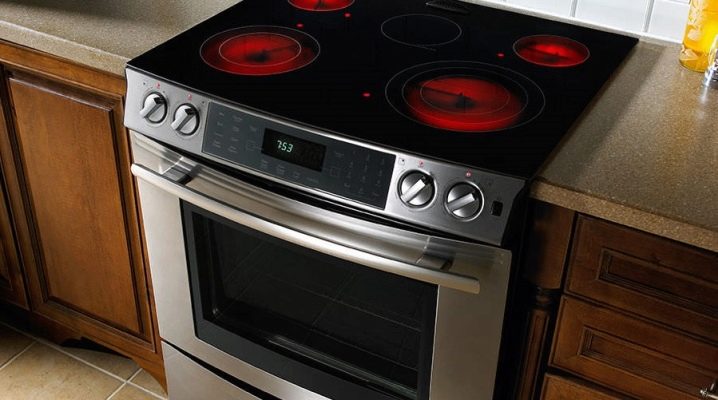
Also, hobs vary in mobility. There are desktop (portable) and built-in models. The built-in stationary model has a more aesthetic appearance. Portable ones are mobile and practical. There are 4 types of management.
- Handle control. The most common option that we meet on standard gas stoves.
- Touch control. Carried out through the touch panel.
- Button control.
- Combined option. Can combine different variations of the first three options.



The dimensions of the hobs depend on the size of the burners and the functions that the manufacturer has included there. The average size of a two-burner hob is 27x50 cm.

How to choose?
The choice of the hob comes mainly from the required functionality. In this article, we will look at the main options included in the hobs.
- Timer. Allows you to set the time and intensity of the cooker. After the set cooking time has elapsed, the stove will turn itself off.
- Auto shutdown. Security related function. The stove turns off if a person does not perform any action for a long time.
- Pause. Function that regulates the intensity of the cooker. The heating of the cooking zones can be stopped with a single press, they will go into the keep warm mode.
- Auto-boiling. A special sensor monitors what is happening on the hob. If the water boils, the heating power is automatically reduced.
- Locking the control panel. The main task is to protect against misuse (for example, by children). To set the necessary parameters for the work of the stove, you need to perform a number of actions. If the required order is violated, the control panel is automatically locked.
- Residual heat. This function is protective. The sensor indicates the residual heat in the hotplate while it cools down so that the user does not burn himself.
- Material recognitionthe utensils used are made of.

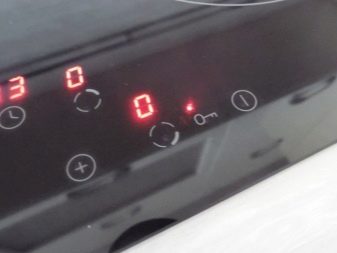
In order not to regret your choice, before buying, you need to take a number of measures to select the most suitable panel.
- Assess your cooking needs and the time you plan to spend doing this.
- Think about how you usually cook and what dishes. This will help you decide on the functionality of the panel.
- Consider where and how the stove will fit in your kitchen. Assess the space you're ready to allocate for your electric hob. Consider the proximity of the work surface and access to the sink.
- Determine the price segment within which the purchase should fit.
- Based on the reviews, choose 2-3 hob manufacturers for yourself.
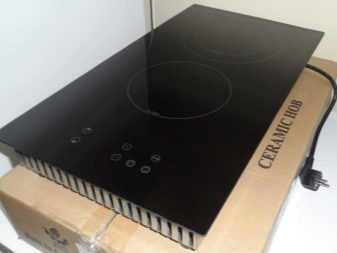

Operating rules
When connecting the stove, it is better to contact a specialist. A correctly connected hob will eliminate network overloads and ensure a long service life of the appliance. The work will be carried out in accordance with the rules for the installation of electrical equipment. If you neglect these standards during installation, then you risk losing the possibility of warranty repair. To connect, two elements are required:
- a separate line with wires matched to the cross-section;
- circuit breaker installed on the line.
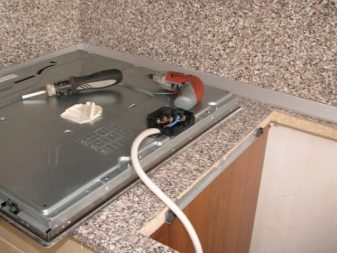

If you do not have the opportunity to extend a separate line, then you can put a separate outlet. Watch out for outlet and cord. Avoid kinking the cord or exposed wires. When removing the plug, support the outlet with your hand. Do not pull out the cord.

One of the main rules of operation is to use pans with a flat bottom, slightly larger or equal (in the case of Hi Light hobs) to the size of the burner. Cookware with a smaller diameter or uneven bottom is not allowed.

Make sure that no water gets on hot plates. To keep the top panel undamaged, do not turn on the panel at full power when there is no cookware on it. Remember to put the pans down first and then turn on the hotplate.

How to care?
Proper care will significantly increase the operating time of the device. There are very few rules. Manufacturers recommend that you immediately purchase a special scraper and cleaner. Sometimes they are immediately attached to the device. If they are not provided in the kit, then they can be purchased at hardware stores at very affordable prices. Scrapers are simpler (plastic, as a rule, short-lived) or in sets (with replaceable nozzles).

It is best to clean the panel every 2 days. Otherwise, the dirt will burn and dry out. To clean the panel, you need to grind the product with a clean cloth, then remove it with a damp towel, wipe it dry and let it stand for some time (20 minutes) in case the water remains somewhere. Do not use dish scouring pads. The use of steel wool or sandpaper is strictly prohibited. Doing so can scratch the panel and significantly reduce its lifespan. It looks especially ugly on white panels.
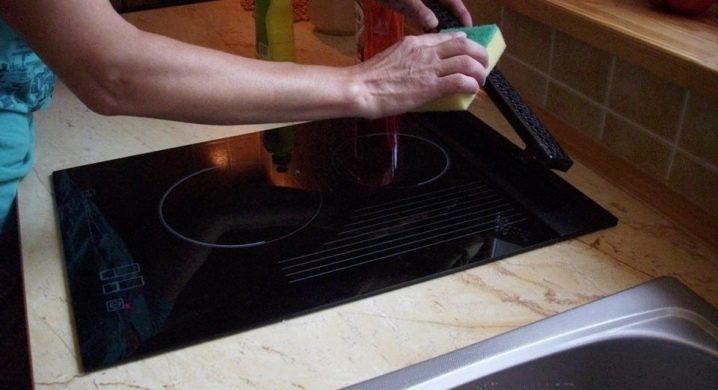
Do not use folk remedies or dishwashing solutions. Special tools are enough for a long time, with them it is much easier to keep the panel in good condition. They create a film on the panel, preventing fat and microparticles from sticking. Standard detergents can stain the panel. The best option would be a special product produced by the same company as the hob. Pay attention to the selection of dishes. For each material there is a designation for which hobs they can be used for.

Copper and aluminum utensils leave pearlescent stains that are extremely difficult to remove. The bottom of the cookware should be flat and thick. Although some manufacturers, on the contrary, recommend using pans with a slightly concave bottom, since when heated, it deforms and completely contacts the surface of the burner. The instructions for the device usually include tips and tricks for using the cookware.
Do not use kitchen powders, baking soda or other loose products for care. They leave micro-scratches on the surface. Also, do not use foods (oils), as they will burn when heated. With proper connection and proper care, the panel will last about 15 years.

Complete and safe care instructions:
- We remove food debris with a scraper. If sugar or foil gets on the panel, remove them before using the scraper.
- Then we apply the gel and distribute it with a paper towel. And remove with wet wipes.
- If it is necessary to remove stains that provoke discoloration from lime, we use detergents for cleaning stainless steel and ceramics. We do this when the surface has cooled down.
- Light dirt can be removed with a mirror cleaner.
- The area around the burners can be cleaned with soapy water and a soft cloth.

For more on how to choose a two-burner electric hob, see the video below.











The comment was sent successfully.